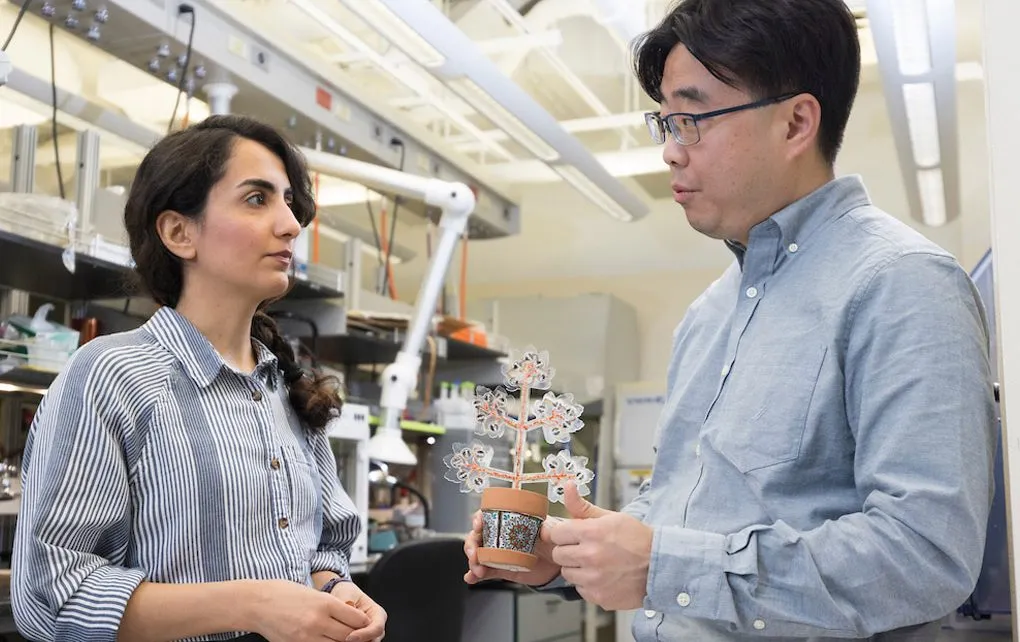Researchers at Binghamton University in New York, USA are developing some of their research on bacteria-powered biobatteries into artificial indoor plants that can produce oxygen and generate power.
Professor Seokheun Choi and Ph.D. student Maryam Rezaie first developed an artificial leaf, then went on to build a plant with five leaves once they realised the leaf was able to capture carbon dioxide and generate oxygen.
Choi says building materials and carpets can contain or generate toxic materials, along with everyday activities like cooking. According to their research paper, the World Health Organization (WHO) has “designated poor air quality as the foremost environmental threat to public health worldwide”.
The artificial plants are able to “harnesses cyanobacterial CO2 fixation to generate oxygen and bioelectricity during their photosynthesis, acting as a miniaturised version of carbon capture and utilisation technology tailored for indoor environments”.

Choi says the power generation is a secondary benefit of the plants, but hopes to improve the technology to achieve a minimum output of more than 1 milliwatt. He believes it can offer practical uses like charging a mobile phone.
The researchers are also considering other upgrades such as using multiple bacteria species to ensure long-term viability, and developing ways to minimise maintenance.
Researchers around the world are creating innovative indoor air quality solutions – such as low-cost art installations that purify the air – with the importance of IAQ front of mind since the COVID-19 pandemic. HVAC&R News recently spoke to Professor Brendan Crabb from the Burnet Institute, who said Australians spend up to 90 per cent of their time indoors and that better indoor air quality can reduce the spread of illnesses, boost productivity, strengthen climate change resilience, and gain strong community support.
“With some fine-tuning, these artificial plants could be a part of every household,” says Choi. “The benefits of this idea are easy to see.”
The full research paper is available to read here.
Images courtesy of Binghamton University.



Leave a Reply